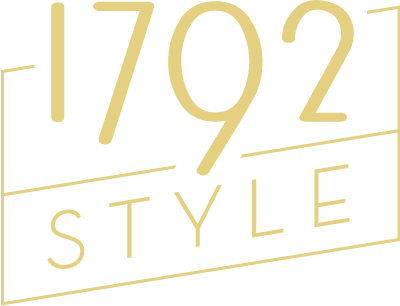The Everything-You-Need-to-Know Guide to Hunting (and Pecking)
Writing is by and large a sensory experience, even on a laptop. You feel the keyboard keys under your fingers, and you hear the faint clacking as you turn letters into words, words into stories. But there’s a disconnect between you and your writing. They don’t truly exist, except as little dots on a screen. They can be effortlessly forgotten, disappeared by the press of a single button.
But 40 years ago and more, writing was a loud, multi-sensory, shouting-your-barbaric-yawp-from-the-rooftops-of-the-world effort.
It was a loud, clattering endeavor, as journalists, novelists, academics, and secretaries hunched over a typewriter, jamming stiff heavy keys that flung up metal arms to strike a black-inked ribbon that left a mark on a crisp white page.
When it was invented, the typewriter was hailed as a time-saving device that would revolutionize how we wrote.
Novelists could speed through their manuscripts, edit them, and then retype them again. No more cramped hands from writing longhand over and over.
Journalists could bang out stories, yank them from the machine, and yell for a copy boy to run them down to the typesetter.
Academics could write research articles and send them to journals to share new knowledge with their colleagues around the world.
It was a revolutionary time, until it wasn’t.
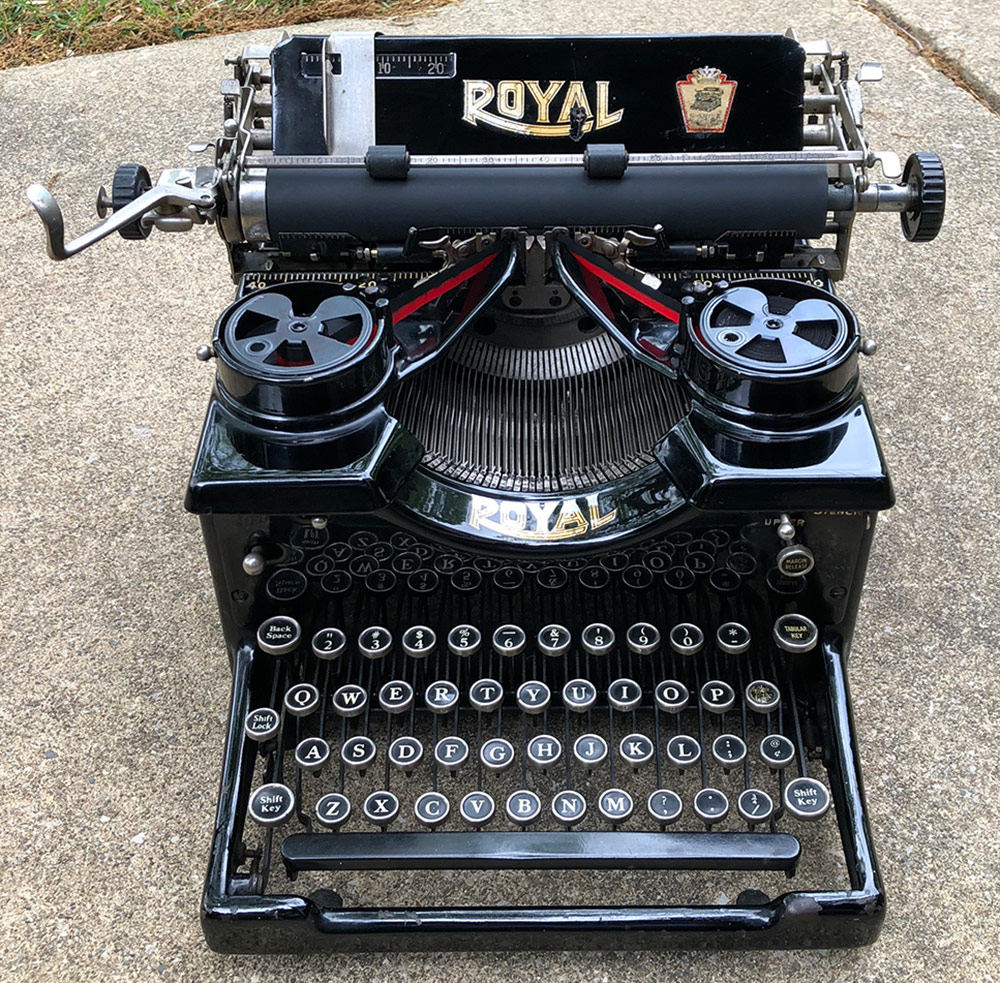
By the 1990s, we were sick of typewriters. They were loud, clunky, and inefficient. We embraced the new word processors and computers for their speed and convenience. No more retyping stories. No more correction fluid or tape to hide your errors. Or worse, no more retyping a whole page because you made one tiny mistake at the bottom.
On the other hand, computers have sucked the soul out of the writing experience. They have distanced us from the sensory experience of striking the keys, the loud CRACK of each metal arm snapping on the page.
While they nearly vanished as one more technology-related extinction, typewriters are actually making a comeback. Just like vinyl records, film cameras, and even video game consoles, typewriters are being rescued from thrift stores and garage sales, lovingly restored, and given new life as a writing instrument. You can even buy replacement ribbons online.
Beyond a Typewriting Relic
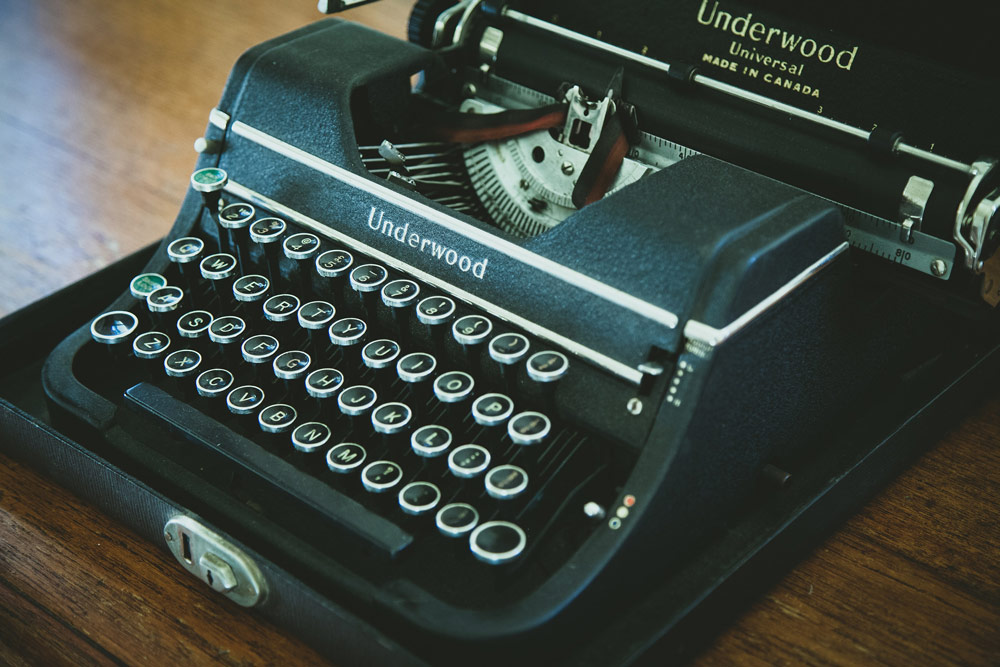
A typewriter is more than a curiosity though. In the right hands, under the right fingers, it can spark your thinking, improve your writing, and deepen relationships. Many of the world’s greatest books were written on typewriters by authors who remained loyal to one brand and even a single machine. Others would bounce around from typer to typer, using whatever they could get hold of.
Writing is different on a typewriter than it is a computer. For one thing, it’s so much slower, you’re forced to slow your thinking down so your fingers can keep up. You can be more deliberate about the next sentence and ponder it before you write it down. And chances are, you’ll go from touch typing 90+ words per minute to two-finger typing at a grinding 30 wpm.
A typewriter is a useful tool if you want to up your style game, too. There’s something special about receiving a typed letter from a friend. It surpasses the hand-written note in novelty and memorability, especially when it’s done on your own letterhead. Get half-sheet letterhead printed at your local printer and roll a sheet into your machine whenever you’re moved to write to someone. (This is a very effective technique for salespeople who want to break through email clutter.)
Finding the Perfect Vintage Typewriter
If you want to get a typewriter yourself, there are many ways to do it. Scour garage sales and thrift shops until you find one, and then watch some videos to see how to clean it. Or send it out to one of the typewriter repair/refurbish specialists around the country — a dying breed if there ever was one. Or buy one that has been completely refurbished on eBay, Etsy, or a specialty typewriter store like KYtyper.com or MyTypewriter.com.
But which model should you get? There are (almost) no wrong answers, but there are a few iconic models that would look great on your desk. If you’re going to get a new typer, why not get something that looks elegant as well as functional? Here are a few popular models to consider.
Remington 5 Streamline
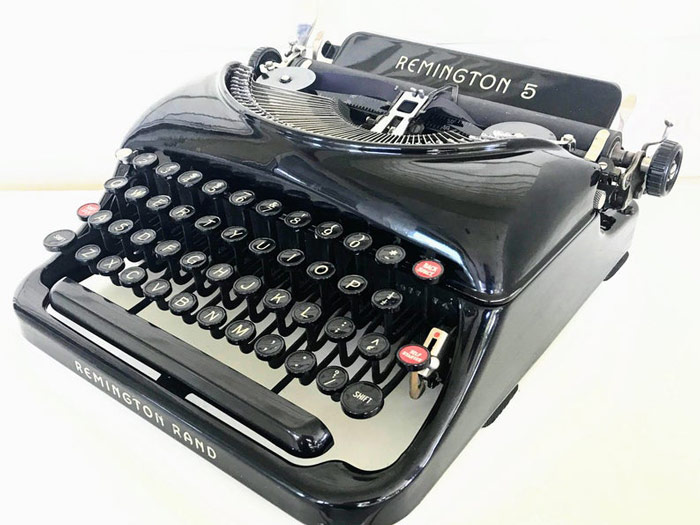
These art deco style machines, made in the 1930s, with their gloss-black bodies, have the lines of an old race car. They’re light and portable, and you’ll spend more time looking at it as you do working on it. Zora Neale Hurston, Aldous Huxley, and Walter Cronkite all used a Remington 5.
L.C. Smith & Corona Silent
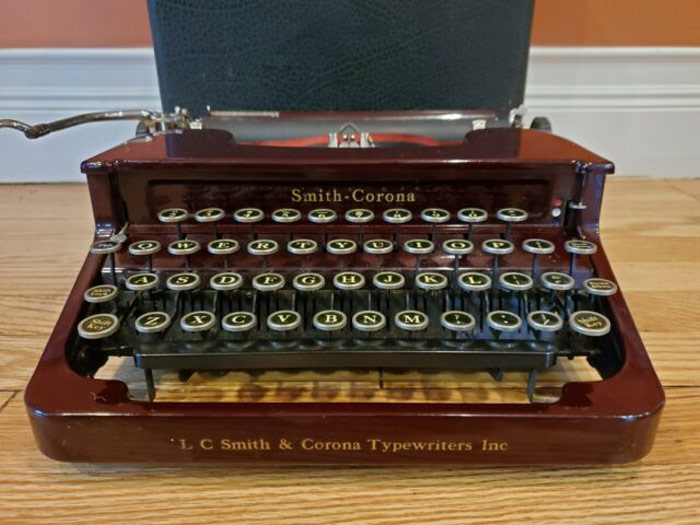
With its maroon or green lacquer finish and signature flat-top lid, this was one of several similar styles the company released in the 1930s, a few years after L. C. Smith & Bros. merged with the Corona Typewriter Company. Joe DiMaggio had a Sterling model (with flat-top design) in his home while he was married to Marilyn Monroe.
Smith-Corona Galaxie
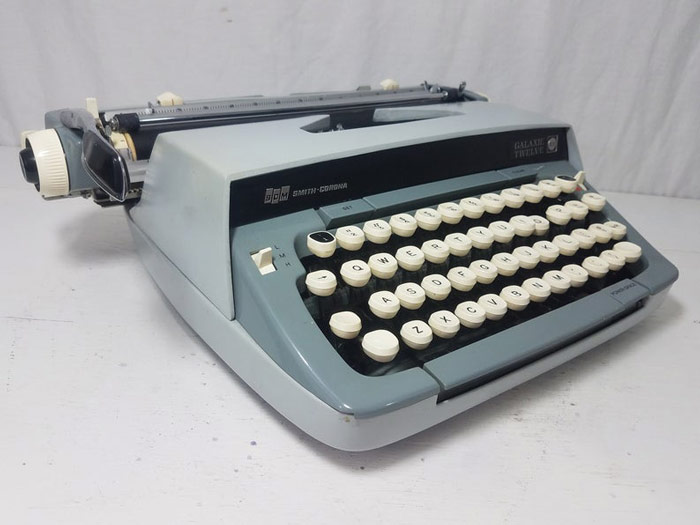
In 1959, Smith-Corona introduced the Galaxie body style which carried them through the mid-1960s. It was also the first model to have white keys. Several models that followed all used the Galaxie design. Novelists Robert Olen Butler and James Clavell used the Galaxie.
Hermes 3000
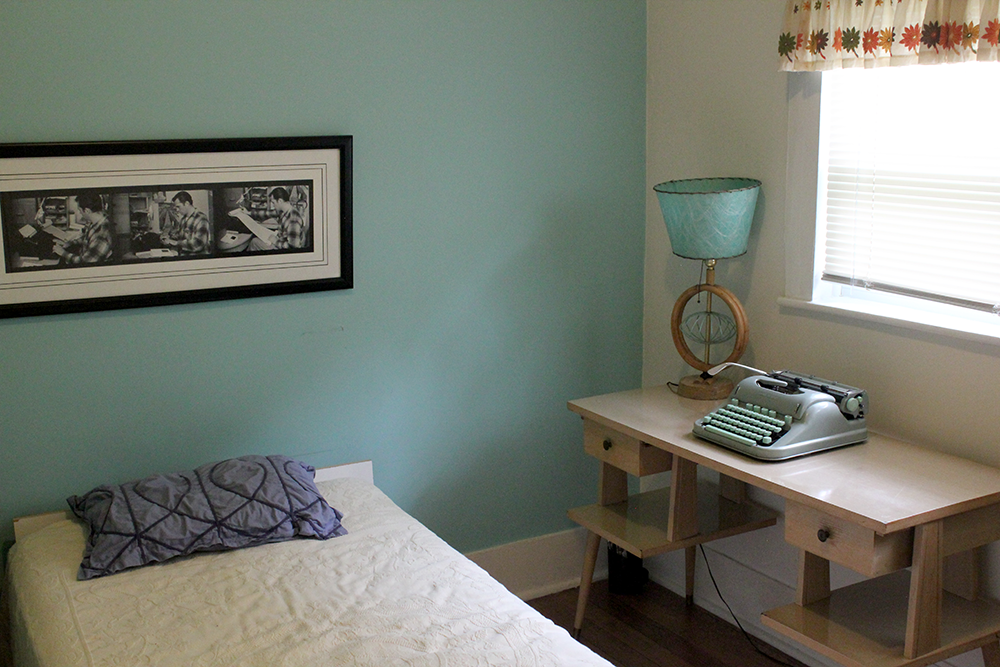
The Hermes 3000 was introduced in 1958 by its Swiss manufacturer, Paillard-Bolex, and was manufactured well into the 1980s. Its curvy lines and seafoam green color make it one of the most recognizable machines among typewriter enthusiasts. It’s comfortable, reliable, and still readily available as a collectible. Stephen Fry favors the 3000, Sylvia Plath wrote her only novel, The Bell Jar, on one, and Jack Kerouac wrote his final novel, Vanity of Duluoz, on one. The Jack Kerouac House in Orlando, Florida has a 3000 sitting in Jack’s old bedroom (pictured).
Olivetti Lettera 32
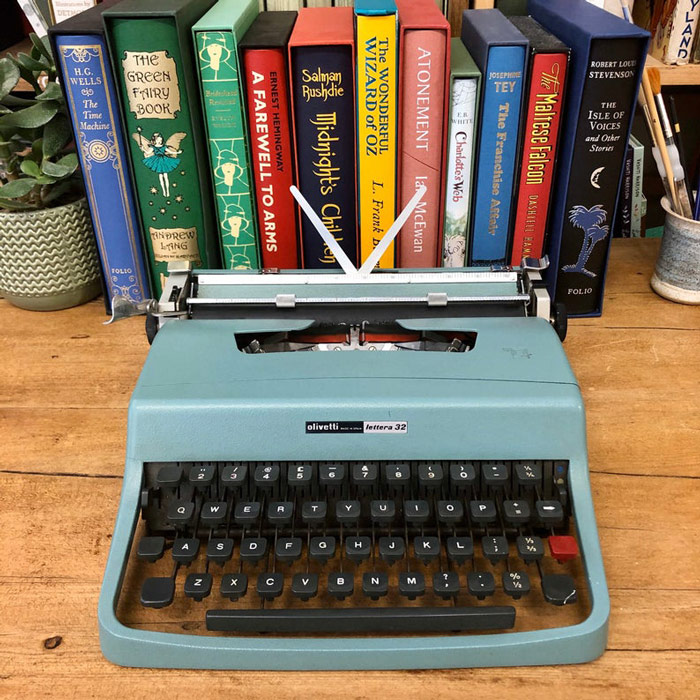
Olivetti knows how to make a typewriter. Created in 1963 to replace the Lettera 22, the 32 was favored by journalists and students. This Italian typewriter and its predecessor remain a popular staple among collectors. Cormac McCarthy bought a light blue 32 in 1965 to write No Country for Old Men, All the Pretty Horses, The Road, and seven other novels. That machine was auctioned off by Christie’s in 2009 for $245,000, and he bought a replacement model for $11. (Yes, eleven dollars.)
Royal KMM
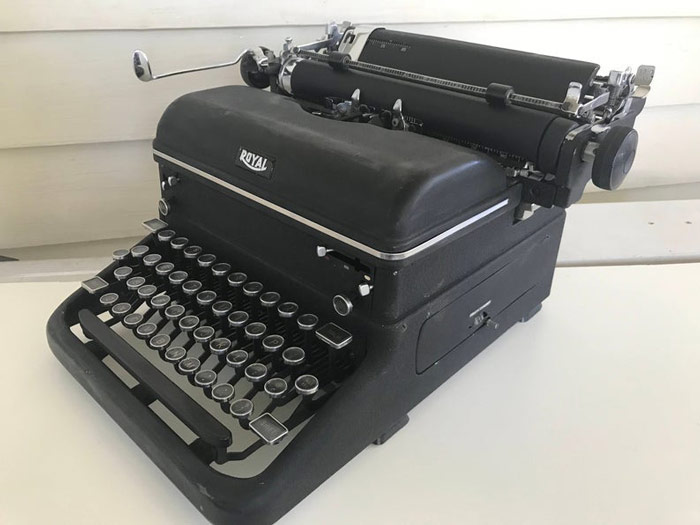
This thing is a tank! The KMM, launched in 1941, is what’s known as a desktop typewriter — all the others on this list have been portables. You can tell it’s a desktop by its oversized, well, tank-ness. It’s made to sit in place on a desk and used by journalists and secretaries, not carted around as students are wont to do.
Red IBM Selectric
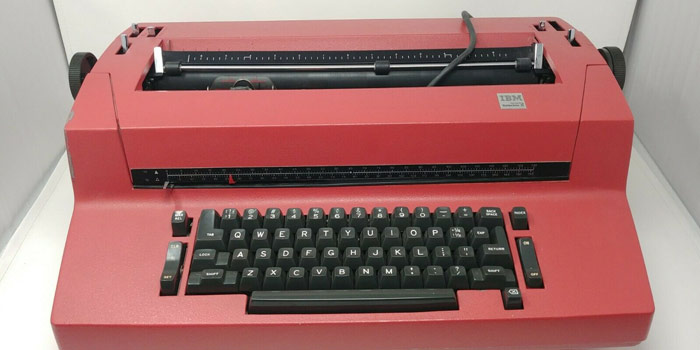
This one holds a special place in our hearts at 1792 Bourbon, because it was the typewriter favored by Kentucky native son, Hunter S. Thompson. While we would normally eschew an electric machine from this list of iconic manuals, we had to include it because HST. The Selectric, also a desktop, was revolutionary because it used a type head about the size and shape of a golf ball. It eliminated the bane of all speed typists, jammed type bars. With the ball, typing speeds and productivity soared, as professionals often reached 125 wpm.
There are hundreds and hundreds, if not a few thousand, different makes, models, and styles. And there are plenty of articles online that will sing the praises, or demonize the failings, of each of them. That means finding your “best” model is a question of taste and personal preference.
A Collector’s Item for the Sophisticate
Typewriter collecting is an expensive and rather bulky habit to get into. If you’ve got the space to spare, pursue the models that bring you joy and use sites like Etsy, eBay, and Craigslist to track them down. But rather than trying to amass every machine you can get your hands on, be selective.
Pick machines by your favorite writers. Or the styles that are aesthetically pleasing to you. Or focus on a particular brand or font size or model year or character style.
Start with one model, clean it up and fix it up, and then start using it. Learn its quirks and peculiarities as you write, whether it’s letters to friends or first drafts of stories. As you come to love your typewriter, you’ll see (and hear) them more and more. See which models appeal to you and figure out what you want before you set your sights on your next acquisition.
A good typewriter is more than just a historic curiosity, it’s a tactile writing experience, an exercise in thoughtfulness, and best of all, it makes for a great story when you show it to your friends or send them a letter.
Editor’s Note: Erik Deckers is a syndicated newspaper columnist, author of four books and was the 2016 writer-in-residence at the Jack Kerouac House in Orlando, Fla. He is a classic typewriter collector and user. His latest novel, Mackinac Island Nation, is available on Amazon.
Top photo by Patrick Fore on Unsplash. Black Royal typewriter photo courtesy of Kentucky Typer. Black Underwood Universal photo by Deleece Cook on Unsplash. Keroac House image courtesy of Erik Deckers. Other images from their respective purchase pages linked in the article.
